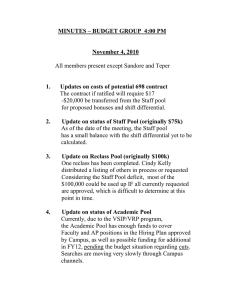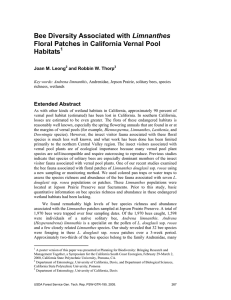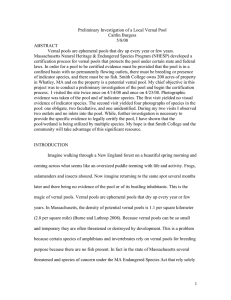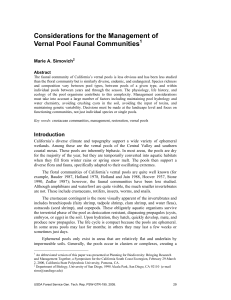Endangered Species Act 40 Anniversary Success Stories Tuctoria greenei
advertisement
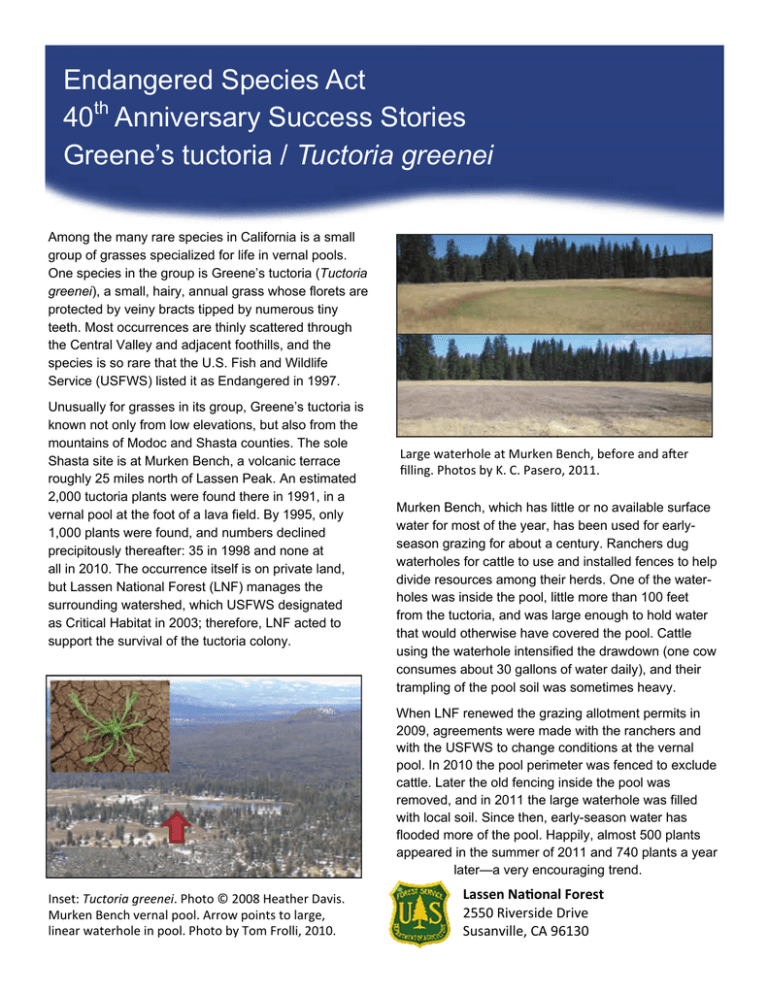
Endangered Species Act 40th Anniversary Success Stories Greene’s tuctoria / Tuctoria greenei Among the many rare species in California is a small group of grasses specialized for life in vernal pools. One species in the group is Greene’s tuctoria (Tuctoria greenei), a small, hairy, annual grass whose florets are protected by veiny bracts tipped by numerous tiny teeth. Most occurrences are thinly scattered through the Central Valley and adjacent foothills, and the species is so rare that the U.S. Fish and Wildlife Service (USFWS) listed it as Endangered in 1997. Unusually for grasses in its group, Greene’s tuctoria is known not only from low elevations, but also from the mountains of Modoc and Shasta counties. The sole Shasta site is at Murken Bench, a volcanic terrace roughly 25 miles north of Lassen Peak. An estimated 2,000 tuctoria plants were found there in 1991, in a vernal pool at the foot of a lava field. By 1995, only 1,000 plants were found, and numbers declined precipitously thereafter: 35 in 1998 and none at all in 2010. The occurrence itself is on private land, but Lassen National Forest (LNF) manages the surrounding watershed, which USFWS designated as Critical Habitat in 2003; therefore, LNF acted to support the survival of the tuctoria colony. Large waterhole at Murken Bench, before and a er filling. Photos by K. C. Pasero, 2011. Murken Bench, which has little or no available surface water for most of the year, has been used for earlyseason grazing for about a century. Ranchers dug waterholes for cattle to use and installed fences to help divide resources among their herds. One of the waterholes was inside the pool, little more than 100 feet from the tuctoria, and was large enough to hold water that would otherwise have covered the pool. Cattle using the waterhole intensified the drawdown (one cow consumes about 30 gallons of water daily), and their trampling of the pool soil was sometimes heavy. When LNF renewed the grazing allotment permits in 2009, agreements were made with the ranchers and with the USFWS to change conditions at the vernal pool. In 2010 the pool perimeter was fenced to exclude cattle. Later the old fencing inside the pool was removed, and in 2011 the large waterhole was filled with local soil. Since then, early-season water has flooded more of the pool. Happily, almost 500 plants appeared in the summer of 2011 and 740 plants a year later—a very encouraging trend. Inset: Tuctoria greenei. Photo © 2008 Heather Davis. Murken Bench vernal pool. Arrow points to large, linear waterhole in pool. Photo by Tom Frolli, 2010. Lassen NaƟonal Forest 2550 Riverside Drive Susanville, CA 96130





